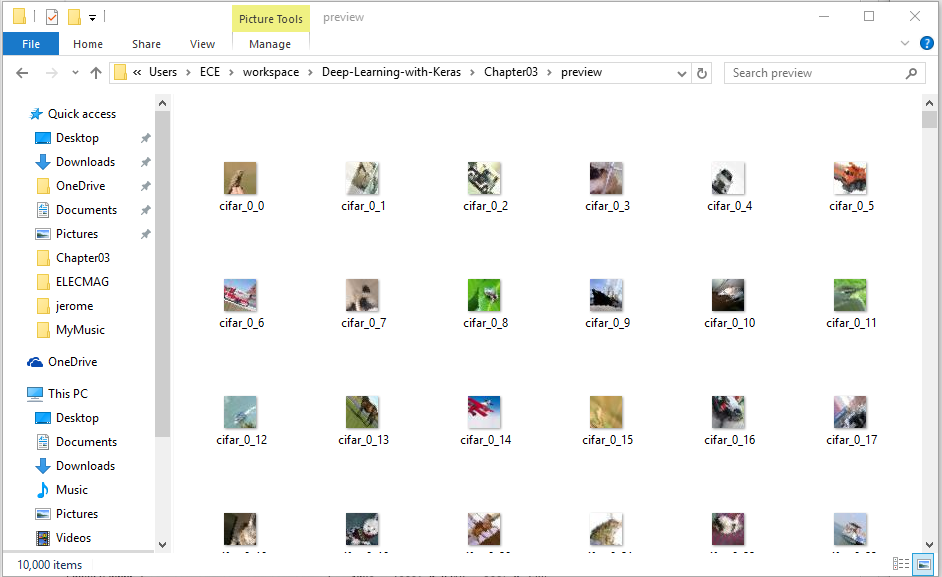Keras Data Augmentation
Step 1: Organize imports
from keras.preprocessing.image import ImageDataGenerator
from keras.datasets import cifar10
import numpy as np
Using TensorFlow backend.
Step 2: Define constant/s
IMG_NUM_TO_AUGMENT=1 # Number of images to augment per original image
Step 3: Load dataset
(X_train, y_train), (X_test, y_test) = cifar10.load_data()
Step 4: Define the ImageDataGenerator object
datagen = ImageDataGenerator(
rotation_range=40, # 0 to 180
width_shift_range=0.2, # horizontal-translation
height_shift_range=0.2, # vertical-translation
zoom_range=0.2, # random zoom
horizontal_flip=True,
fill_mode='nearest') # filling in pixels strategy
Step 5: Generate the images
Note: Create a ‘preview’ folder within the directory
xtas, ytas = [], []
for i in range(X_train.shape[0]):
num_aug = 0
x = X_train[i] # (3, 32, 32) CIFAR image
x = x.reshape((1,) + x.shape) # (1, 3, 32, 32)
for x_aug in datagen.flow(x, batch_size=1,
save_to_dir='preview', save_prefix='cifar', save_format='jpeg'):
if num_aug >= IMG_NUM_TO_AUGMENT:
break
xtas.append(x_aug[0])
num_aug += 1
Sample Result
-mkc
Written on September 30, 2017
